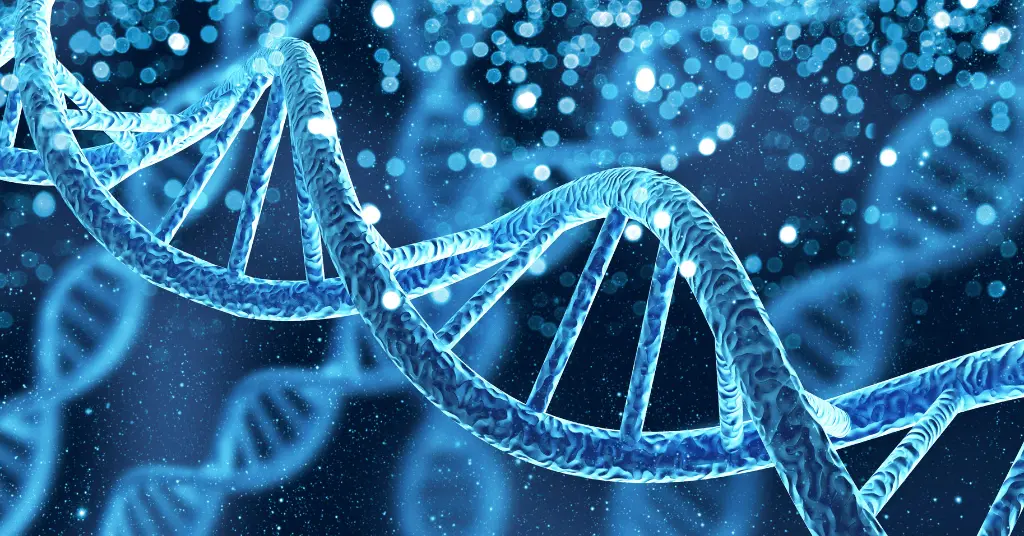AI Answer Evaluation Platform Live Now. Try Free Answer Evaluation Now
Genomatics
Genomatics is an interdisciplinary field that combines genomics, bioinformatics, and systems biology to analyze and interpret genomic data, ultimately facilitating a better understanding of the functional and regulatory mechanisms of living organisms. It leverages advanced computational tools, algorithms, and machine learning techniques to extract meaningful information from vast amounts of genomic data and model complex biological systems.

Historical context
The emergence of Genomatics can be traced back to the late 20th century, with the advent of DNA sequencing technologies and the Human Genome Project (HGP) [1]. The HGP, initiated in 1990 and completed in 2003, revolutionized the field of genomics and laid the foundation for Genomatics by generating an unprecedented volume of genomic data, necessitating the development of bioinformatics tools to analyze and interpret these data.
Importance and applications of Genomatics
Genomatics has the potential to transform numerous fields, including medicine, agriculture, and environmental conservation. It enables personalized medicine, crop improvement, and biodiversity assessment, among other applications. The field is critical for addressing global health and environmental challenges and holds great promise for the future.
Foundations of Genomatics
Genomics
Genomics is the study of an organism’s entire genome, including its structure, function, and evolution [2]. It encompasses several sub-disciplines, such as:
- Whole genome sequencing: Whole genome sequencing (WGS) refers to the determination of the complete DNA sequence of an organism’s genome. WGS has become increasingly affordable and accessible with the development of next-generation sequencing (NGS) technologies [3].
- Functional genomics: Functional genomics aims to understand the biological function of genes and other genomic elements through the investigation of gene expression, regulation, and interactions within cellular and molecular networks [4].
- Comparative genomics: Comparative genomics involves the comparison of genomes from different species to identify evolutionary relationships, conserved genomic elements, and species-specific adaptations [5].
Bioinformatics
Bioinformatics is the application of computational techniques to analyze and interpret biological data, particularly genomic data [6]. Key aspects of bioinformatics include:
- Sequence alignment and analysis: Sequence alignment is a method used to compare homologous DNA, RNA, or protein sequences to identify similarities and differences that provide insights into evolutionary relationships and functional conservation [7].
- Phylogenetics: Phylogenetics is the study of evolutionary relationships among organisms, often represented as a phylogenetic tree [8]. Bioinformatics tools are essential for constructing and analyzing phylogenetic trees based on genomic data.
- Structural bioinformatics: Structural bioinformatics focuses on the analysis and prediction of three-dimensional structures of biological macromolecules, such as proteins and nucleic acids, using computational methods [9].
Systems biology
Systems biology aims to understand complex biological systems by integrating data from different levels of biological organization, such as genes, proteins, and metabolic pathways [10]. It encompasses several sub-disciplines, such as:
- Modeling biological systems: Modeling biological systems involves the development of computational and mathematical models to represent and predict the behavior of biological systems under various conditions [11].
- Network biology: Network biology is the study of biological networks, such as gene regulatory networks, protein-protein interaction networks, and metabolic networks, to understand the complex relationships and dependencies among various biological entities [12].
- Synthetic biology: Synthetic biology is a field that combines engineering principles with biology to design and construct novel biological systems, devices, and organisms with specific functions [13].
Methodologies and Techniques
DNA sequencing technologies
Various DNA sequencing technologies have been developed over time, enabling the generation of large-scale genomic data:
- Sanger sequencing: Sanger sequencing, developed by Frederick Sanger in the 1970s, is the first widely adopted DNA sequencing method and was used in the Human Genome Project [14].
- Next-generation sequencing (NGS): NGS technologies, such as Illumina sequencing and Roche 454 sequencing, have revolutionized genomics by offering high-throughput, cost-effective, and accurate sequencing of large genomic regions [15].
- Third-generation sequencing: Third-generation sequencing technologies, including Pacific Biosciences’ single-molecule real-time (SMRT) sequencing and Oxford Nanopore Technologies’ nanopore sequencing, provide long-read sequencing capabilities and real-time data analysis, enabling the assembly of complex genomes and the identification of structural variations [16].
Genomic data analysis tools
Several bioinformatics tools have been developed to process and analyze genomic data:
- Genome assembly: Genome assembly involves the reconstruction of an organism’s complete genome sequence from the raw sequencing reads. Various assembly algorithms, such as de Bruijn graph-based assemblers and overlap-layout-consensus assemblers, have been developed to address this challenge [17].
- Genome annotation: Genome annotation refers to the identification and functional characterization of genomic elements, such as protein-coding genes, non-coding RNAs, and regulatory regions. Automated annotation pipelines, such as MAKER and NCBI’s Eukaryotic Genome Annotation Pipeline, are widely used for this purpose [18].
- Variant calling: Variant calling is the identification of genomic variations, such as single nucleotide polymorphisms (SNPs) and structural variants, from sequencing data. Tools like GATK, SAMtools, and FreeBayes are widely used for variant calling [19].
Machine learning and artificial intelligence in Genomatics
Machine learning (ML) and artificial intelligence (AI) techniques are increasingly being applied to analyze and interpret genomic data:
- Supervised learning: Supervised learning algorithms, such as support vector machines and random forests, are used to classify genomic data based on labeled training examples, enabling tasks such as gene prediction and disease classification [20].
- Unsupervised learning: Unsupervised learning algorithms, such as clustering and dimensionality reduction techniques, can identify patterns and groupings in genomic data without prior knowledge of classes or labels. Applications include gene expression analysis and the identification of functional modules in biological networks [21].
- Deep learning: Deep learning, a subset of machine learning, involves the use of neural networks with multiple layers to learn hierarchical representations of genomic data. Deep learning has been applied to tasks such as predicting gene expression levels, protein structure prediction, and identifying regulatory elements [22].
Applications of Genomatics
Genomatics has numerous applications across various fields:
Medicine
- Personalized medicine: Genomatics enables the development of personalized medicine by identifying genetic variants associated with diseases, drug responses, and individual susceptibility to adverse effects, allowing for tailored treatments and preventative measures [23].
- Pharmacogenomics: Pharmacogenomics is the study of how genetic variations affect drug response and metabolism. Genomatics can help identify genetic markers associated with drug efficacy and safety, leading to more effective drug therapies [24].
- Disease diagnostics and prevention: Genomatics can facilitate early diagnosis and prevention of diseases by identifying disease-associated genetic markers and developing diagnostic tests based on these markers [25].
Agriculture
- Crop improvement: Genomatics can assist in the development of improved crop varieties by identifying beneficial genetic traits and facilitating marker-assisted breeding and genetic engineering approaches [26].
- Livestock breeding: Genomatics enables the identification of genetic markers associated with desirable traits in livestock, such as growth rate, disease resistance, and meat quality, leading to more efficient breeding programs [27].
- Pest management: Genomatics can aid in the development of environmentally friendly pest management strategies by identifying target genes for biological control agents and providing insights into the evolution of pesticide resistance [28].
Environmental and conservation biology
- Metagenomics: Metagenomics is the study of genetic material from environmental samples, providing insights into microbial communities and their roles in ecosystems. Genomatics facilitates the analysis of metagenomic data and helps in understanding complex microbial interactions [29].
- Biodiversity assessment: Genomatics can be used to assess biodiversity by analyzing genomic data from multiple species, revealing patterns of genetic diversity, population structure, and gene flow [30].
- Conservation genomics: Conservation genomics involves the application of genomics to the management and preservation of endangered species and their habitats. Genomatics can help identify genetic factors contributing to the decline of species and inform conservation strategies [31].
Ethical, Legal, and Social Implications
Genomatics raises several ethical, legal, and social issues, such as:
- Genetic privacy and data security: The widespread generation and sharing of genomic data pose challenges to maintaining individual privacy and data security. Safeguards must be put in place to protect sensitive genetic information from unauthorized access and potential misuse [32].
- Intellectual property and patenting: The patenting of genetic sequences and genomic technologies raises concerns about the equitable distribution of benefits derived from genomics research, particularly in cases where patented materials are essential for further research or clinical applications [33].
- Access to genomic information and technologies: Ensuring access to genomic information and technologies, particularly for individuals and communities in resource-limited settings, is essential for promoting global health equity and avoiding disparities in health outcomes [34].
- Discrimination and stigmatization: The potential misuse of genetic information may lead to discrimination and stigmatization based on an individual’s genetic profile, particularly in the context of employment, insurance, and social interactions [35].
- Genetic modification and its ethical considerations: Genetic modification techniques, such as gene editing and synthetic biology, raise ethical concerns related to the potential risks and unintended consequences of modifying organisms and ecosystems, as well as questions about the limits of human intervention in nature [36].
Future Prospects and Challenges
Genomatics holds immense potential for advancing our understanding of biology and improving various aspects of human life. However, several challenges and prospects lie ahead:
- Technological advancements: Continued advancements in DNA sequencing technologies, computational tools, and machine learning algorithms will enable the generation and analysis of even larger and more complex genomic datasets [37].
- Integration with other scientific disciplines: The integration of genomatics with other scientific disciplines, such as proteomics, metabolomics, and imaging technologies, will facilitate a more comprehensive understanding of biological systems and their responses to various perturbations [38].
- Addressing global health and environmental issues: Genomatics has the potential to address critical global challenges, such as infectious diseases, antimicrobial resistance, climate change, and biodiversity loss. Collaborative and interdisciplinary research efforts will be essential to harness the full potential of genomatics in addressing these issues [39].
- Education and public awareness: Educating the public and future generations of scientists about genomatics and its potential benefits and risks is crucial for fostering a scientifically informed and engaged society that can responsibly navigate the complex ethical, legal, and social implications of genomics research [40].
References
[1] Lander, E. S., Linton, L. M., Birren, B., Nusbaum, C., Zody, M. C., Baldwin, J., … & International Human Genome Sequencing Consortium. (2001). Initial sequencing and analysis of the human genome. Nature, 409(6822), 860-921.
[2] Pevsner, J. (2015). Bioinformatics and functional genomics. John Wiley & Sons.
[3] Goodwin, S., McPherson, J. D., & McCombie, W. R. (2016). Coming of age: ten years of next-generation sequencing technologies. Nature Reviews Genetics, 17(6), 333-351.
[4] Brazma, A., Jonassen, I., Eidhammer, I., & Gilbert, D. (2001). Approaches to the automatic discovery of patterns in biosequences. Journal of Computational Biology, 5(2), 279-305.
[5] Koonin, E. V. (2005). Orthologs, paralogs, and evolutionary genomics. Annual Review of Genetics, 39, 309-338.
[6] Mount, D. W. (2004). Bioinformatics: Sequence and genome analysis. Cold Spring Harbor Laboratory Press.
[7] Durbin, R., Eddy, S. R., Krogh, A., & Mitchison, G. (1998). Biological sequence analysis: probabilistic models of proteins and nucleic acids. Cambridge University Press.
[8] Felsenstein, J. (2004). Inferring phylogenies. Sinauer Associates.
[9] Bourne, P. E., & Weissig, H. (2003). Structural bioinformatics. John Wiley & Sons.
[10] Kitano, H. (2002). Systems biology: a brief overview. Science, 295(5560), 1662-1664.
[11] Alon, U. (2006). An introduction to systems biology: design principles of biological circuits. CRC Press.
[12] Barabási, A. L., & Oltvai, Z. N. (2004). Network biology: understanding the cell’s functional organization. Nature Reviews Genetics, 5(2), 101-113.
[13] Endy, D. (2005). Foundations for engineering biology. Nature, 438(7067), 449-453.
[14] Sanger, F., Nicklen, S., & Coulson, A. R. (1977). DNA sequencing with chain-terminating inhibitors. Proceedings of the National Academy of Sciences, 74(12), 5463-5467.
[15] Mardis, E. R. (2008). Next-generation DNA sequencing methods. Annual Review of Genomics and Human Genetics, 9, 387-402.
[16] Rhoads, A., & Au, K. F. (2015). PacBio sequencing and its applications. Genomics, Proteomics & Bioinformatics, 13(5), 278-289.
[17] Li, R., Zhu, H., Ruan, J., Qian, W., Fang, X., Shi, Z., … & Li, Y. (2010). De novo assembly of human genomes with massively parallel short read sequencing. Genome Research, 20(2), 265-272.
[18] Yandell, M., & Ence, D. (2012). A beginner’s guide to eukaryotic genome annotation. Nature Reviews Genetics, 13(5), 329-342.
[19] Nielsen, R., Paul, J. S., Albrechtsen, A., & Song, Y. S. (2011). Genotype and SNP calling from next-generation sequencing data. Nature Reviews Genetics, 12(6), 443-451.
[20] Libbrecht, M. W., & Noble, W. S. (2015). Machine learning applications in genetics and genomics. Nature Reviews Genetics, 16(6), 321-332.
[21] Eisen, M. B., Spellman, P. T., Brown, P. O., & Botstein, D. (1998). Cluster analysis and display of genome-wide expression patterns. Proceedings of the National Academy of Sciences, 95(25), 14863-14868.
[22] Angermueller, C., Pärnamaa, T., Parts, L., & Stegle, O. (2016). Deep learning for computational biology. Molecular Systems Biology, 12(7), 878.
[23] Hamburg, M. A., & Collins, F. S. (2010). The path to personalized medicine. New England Journal of Medicine, 363(4), 301-304.
[24] Evans, W. E., & Relling, M. V. (2004). Moving towards individualized medicine with pharmacogenomics. Nature, 429(6990), 464-468.
[25] Manolio, T. A., Collins, F. S., Cox, N. J., Goldstein, D. B., Hindorff, L. A., Hunter, D. J., … & Visscher, P. M. (2009). Finding the missing heritability of complex diseases. Nature, 461(7265), 747-753.
[26] Varshney, R. K., Hoisington, D. A., & Tyagi, A. K. (2005). Advances in cereal genomics and applications in crop breeding. Trends in Biotechnology, 23(11), 570-578.
[27] Hayes, B. J., Bowman, P. J., Chamberlain, A. J., & Goddard, M. E. (2013). Invited review: Genomic selection in dairy cattle: progress and challenges. Journal of Dairy Science, 92(2), 433-443.
[28] Carrière, Y., Ellers-Kirk, C., Sisterson, M., Antilla, L., Whitlow, M., Dennehy, T. J., & Tabashnik, B. E. (2003). Long-term regional suppression of pink bollworm by Bacillus thuringiensis cotton. Proceedings of the National Academy of Sciences, 100(4), 1519-1523.
[29] Handelsman, J. (2004). Metagenomics: application of genomics to uncultured microorganisms. Microbiology and Molecular Biology Reviews, 68(4), 669-685.
[30] Moritz, C., & Hillis, D. M. (1996). Molecular systematics: context and controversies. Molecular Biology and Evolution, 13(7), 895-895.
[31] Shafer, A. B., Wolf, J. B., Alves, P. C., Bergström, L., Bruford, M. W., Brännström, I., … & Zieliński, P. (2015). Genomics and the challenging translation into conservation practice. Trends in Ecology & Evolution, 30(2), 78-87.
[32] Rodriguez, L. L., Brooks, L. D., Greenberg, J. H., & Green, E. D. (2013). The complexities of genomic identifiability. Science, 339(6117), 275-276.
[33] Cook-Deegan, R., & Conley, J. M. (2010). The next controversy in genetic testing: clinical data as trade secrets? European Journal of Human Genetics, 18(11), 1181-1182.
[34] Yusuf, S., Baden, L. R., & Gaziano, J. M. (2017). Global health and genomics. New England Journal of Medicine, 377(9), 898-900.
[35] Hudson, K. L., Holohan, M. K., & Collins, F. S. (2008). Keeping pace with the times—the Genetic Information Nondiscrimination Act of 2008. New England Journal of Medicine, 358(25), 2661-2663.
[36] Lanphier, E., Urnov, F., Haecker, S. E., Werner, M., & Smolenski, J. (2015). Don’t edit the human germ line. Nature, 519(7544), 410-411.
[37] Stephens, Z. D., Lee, S. Y., Faghri, F., Campbell, R. H., Zhai, C., Efron, M. J., … & Robinson, G. E. (2015). Big Data: Astronomical or genomical? PLoS Biology, 13(7), e1002195.
[38] Auffray, C., Chen, Z., & Hood, L. (2009). Systems medicine: the future of medical genomics and healthcare. Genome Medicine, 1(1), 2.
[39] McCarthy, M. I. (2017). Painting a new picture of personalised medicine for diabetes. Diabetologia, 60(5), 793-799.
[40] Dougherty, M. J. (2009). Closing the gap: inverting the genomics classroom. Genetics, 181(1), 1-2.
External Links
- National Human Genome Research Institute (NHGRI): https://www.genome.gov/



